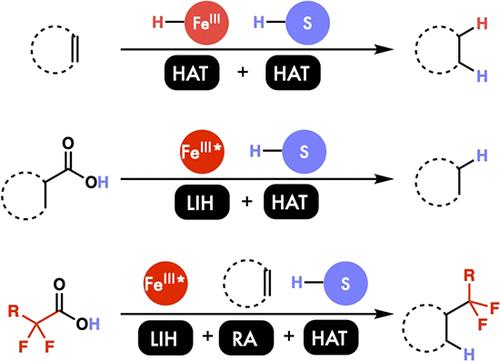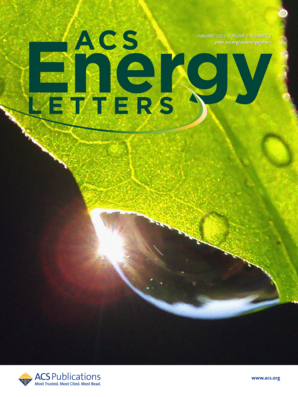Building Catalytic Reactions One Electron at a Time
IF 19.3
1区 材料科学
Q1 CHEMISTRY, PHYSICAL
引用次数: 0
Abstract
Classical education in organic chemistry and catalysis, not the least my own, has centered on two-electron transformations, from nucleophilic attack to oxidative addition. The focus on two-electron chemistry is well-founded, as this brand of chemistry has enabled incredible feats of synthesis, from the development of life-saving pharmaceuticals to the production of ubiquitous commodity chemicals. With that said, this approach is in many ways complementary to the approach of nature, where enzymes frequently make use of single-electron “radical” steps to achieve challenging reactions with exceptional selectivity, including light detection and C–H hydroxylation. While the power of radical elementary steps is undeniable, the fundamental understanding of─and ability to apply─these in catalysis remains underdeveloped, constraining the palette with which chemists can make new reactions.

逐个电子建立催化反应
有机化学和催化方面的经典教育,尤其是我自己的教育,都以双电子转化为中心,从亲核反应到氧化加成。对双电子化学的关注是有充分依据的,因为这种化学品牌促成了令人难以置信的合成壮举,从救命药物的开发到无处不在的商品化学品的生产,不一而足。在自然界中,酶经常利用单电子 "自由基 "步骤来实现具有特殊选择性的挑战性反应,包括光探测和 C-H 羟基化反应。尽管自由基基本步骤的威力毋庸置疑,但人们对自由基基本步骤的基本了解以及在催化中应用自由基基本步骤的能力仍然欠缺,这限制了化学家们进行新反应的调色板。
本文章由计算机程序翻译,如有差异,请以英文原文为准。
求助全文
约1分钟内获得全文
求助全文
来源期刊

ACS Energy Letters
Energy-Renewable Energy, Sustainability and the Environment
CiteScore
31.20
自引率
5.00%
发文量
469
审稿时长
1 months
期刊介绍:
ACS Energy Letters is a monthly journal that publishes papers reporting new scientific advances in energy research. The journal focuses on topics that are of interest to scientists working in the fundamental and applied sciences. Rapid publication is a central criterion for acceptance, and the journal is known for its quick publication times, with an average of 4-6 weeks from submission to web publication in As Soon As Publishable format.
ACS Energy Letters is ranked as the number one journal in the Web of Science Electrochemistry category. It also ranks within the top 10 journals for Physical Chemistry, Energy & Fuels, and Nanoscience & Nanotechnology.
The journal offers several types of articles, including Letters, Energy Express, Perspectives, Reviews, Editorials, Viewpoints and Energy Focus. Additionally, authors have the option to submit videos that summarize or support the information presented in a Perspective or Review article, which can be highlighted on the journal's website. ACS Energy Letters is abstracted and indexed in Chemical Abstracts Service/SciFinder, EBSCO-summon, PubMed, Web of Science, Scopus and Portico.
 求助内容:
求助内容: 应助结果提醒方式:
应助结果提醒方式:


